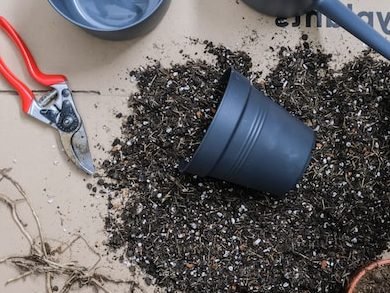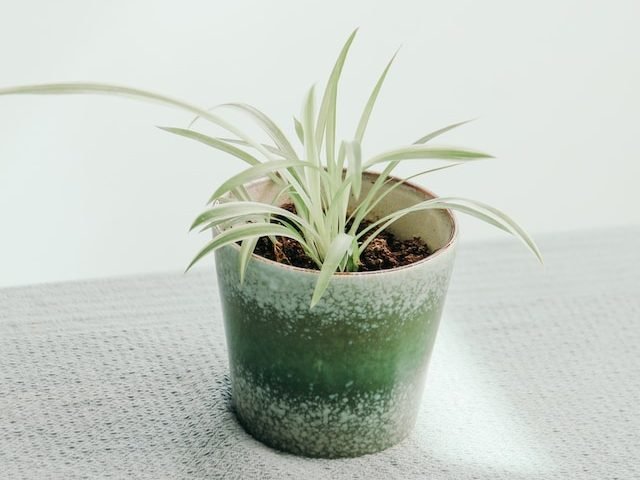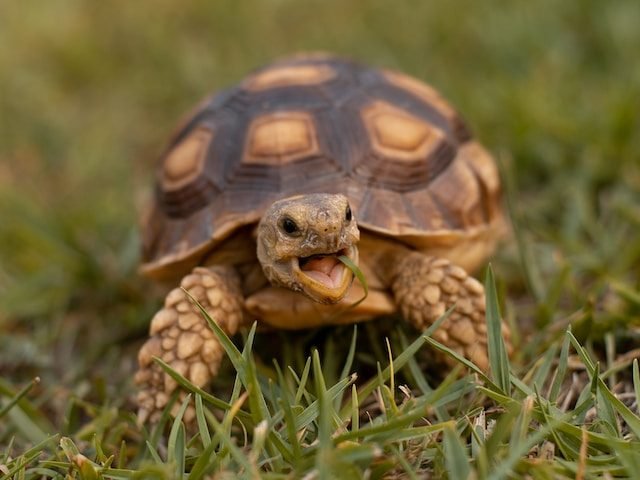Large tree philodendron leaf
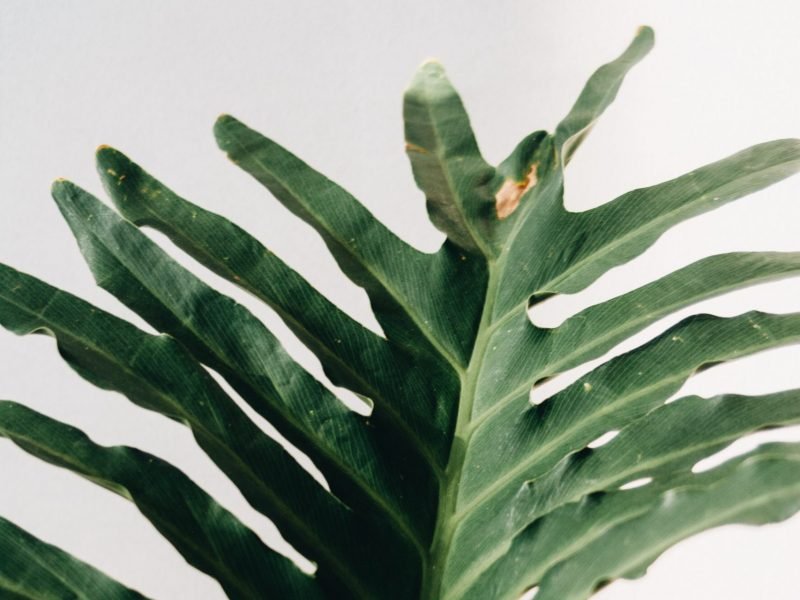
Tree Philodendrons are one of the less common Philodendron varieties out there but is easy to grow and is a great way to bring a little piece of the tropics into your home. Native to tropical regions in South America, the Tree Philodendron is a large plant with striking split rugged leaves.
They are commonly known as either the Tree Philodendron or the Split-leaf Philodendron but also go by a few other names including the Philodendron selloum, Lacy tree philodendron Horsehead philodendron or its Latin names of Thaumatophyllum bipinnatifidum and Philodendron bipinnatifidum.
Below you will find our detailed Tree Philodendron Care Guide with all the information you need to keep your plant happy and healthy.
How to Care for a Tree Philodendron
One great thing about this plant is that it’s actually really easy to care for, despite its dramatic look and dominating presence. It is quite adaptable to a range of environments and will survive well in most homes with a regular but undemanding care routine.
The main things you need to worry about when it comes to caring for a Tree Philodendron are light level, watering routine and humidity. These plants thrive in medium to bright but indirect light and can dry out quickly if exposed to intense direct sun in summer.
Getting the right amount of water right can be a bit tricky as these plants love a consistently moist but not soggy potting mix. Their root system will start to dry out if the soil is bone dry for extended periods of time and it will also start to rot if waterlogged.
The third main pillar of care is getting the humidity level right. As they are native to the tropical regions of South America, Tree Philodendrons prefer a slightly raised humidity so aim for at least above 50%.
Tree Philodendron Overview
Origin: South America (Brazil, Argentina, Bolivia and Paraguay)
Latin Name: Thaumatophyllum bipinnatifidum / Philodendron bipinnatifidum
Common Name(s): Tree philodendron, Split-leaf philodendron, Philodendron Selloum, Lacy tree philodendron Horsehead philodendron
Plant Family: Araceae (Arum) family
Difficulty Level: Easy to Moderate
Appearance: Large deep green leaves with deep lobes that cut nearly all of the way through the leaf.
Height and Size: Indoors can reach a maximum of 10 feet (3 meters) in height and can spread up to 5 feet (1.5 meters).
Growth Rate: Slow to Medium
Flowering: White spathe and spadix flowers.
Pruning: Regular pruning is not required. Only to remove dead or dying leaves.
Cleaning: Regular dusting is crucial.
Light Requirements: Bright, but indirect sunlight.
Water Requirements: Consistently moist soil but never waterlogged.
Best Soil: Well-draining, nutrient-rich potting mix that includes perlite.
Ideal temperature: 65-85°F (18-29°C)
Fertilizing Routine: Apply a well-balanced fertilizer once a month during spring and summer.
Ideal Humidity Level: Thrive in a high humidity level of 50% and above.
Propagation: Through stem cuttings or division of the mother plant.
Repotting Frequency: Every 1-2 years, on average.
Toxicity: Toxic to humans and pets.
Risk of Pests: Some risk of spider mites, gnats, mealybugs and aphids.
Common Problems: Discolouration of the foliage (yellow or brown leaves), drooping stems and leaf loss.
Tree Philodendron Origin
Native to regions of South America including southern Brazil, Argentina, Paraguay and Bolivia, the Tree Philodendron grows along the river edges of tropical forests throughout this region. This means they thrive in warm and humid environments.
Philodendron Selloum Family
They are a member of the Araceae (Arum) family, which is a large family of over 3,500 species of flowering plants. The flowers are borne on a distinctive spadix, surrounded by a bracht known as a spathe.
Tree Philodendron Height and Size
They are very large plants that can grow up to 15 feet in their native environment. However, when grown indoors they will reach a maximum of 10 feet in height and 5 feet in spread. This will take decades to reach this height so don’t worry about it outgrowing your home any time soon.
Tree Philodendron Growth Rate
These plants have a medium growth rate. You won’t see new leaves popping out every week but you will be rewarded with plenty of new growth throughout spring and summer.
Flowers on a Tree Philodendron
As they are part of the Araceae family, Tree Philodendrons will sometimes develop white or cream-coloured leaves. These are borne on a distinctive spadix which is surrounded by a single-leaf white spathe.
Don’t get too excited about the idea of your Split-leaf Philodendron blooming though as flowering can be quite rare and will only happen on more mature plants. The flowers will only tend to last about a week before wilting so can be easily missed.
Pruning your Philodendron Selloum
Regular pruning is not required when caring for a Tree Philodendron. Instead, only prune dead or dying leaves from your plant. They will naturally fall from your plant once dead but pruning them can allow for any energy to be diverted into growing new leaves, rather than trying to revive the dying leaves.
You can also choose to prune a few leaves to reshape or make your plant smaller for the desired space.
Cleaning your Tree Philodendron
Tree Philodendron plants are dust magnets as they have large flat leaves. This makes cleaning a vital part of your care routine. Not only does removing dust and dirt help more sunlight reach the leaves but it also unclogs the tiny pores throughout the leaf which will help your plant ‘breathe’ better. Cleaning will also help the leaves look shinier and less dull which is an added aesthetic bonus!
Use a duster or a damp cloth to wipe over the leaves to remove dust. If this isn’t working then you may want to use a drop of dish soap but stay away from any harsh chemicals as this can damage the leaves.
We often see plant parents wanting to use leaf shine on their plants to give the leaves a shiny finish. However, we strongly advise against it as it can actually damage the top layer of the leaf.
Healthy tree philodendron
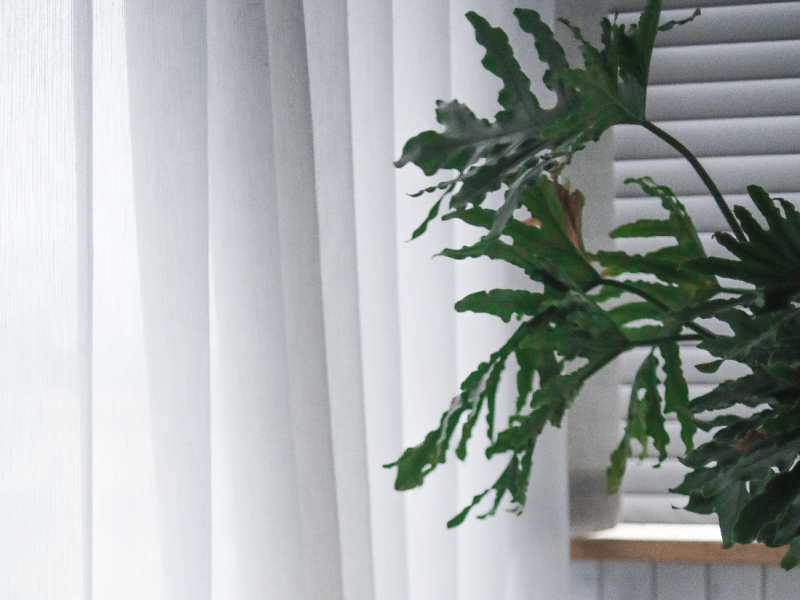
Light Requirements for a Tree Philodendron
Philodendron Selloum thrive best in areas with medium to bright, indirect light. However, keep them out of direct sunlight as this can easily damage the leaves by burning them or by drying them out. This can cause either brown or yellow spots and patches throughout the leaf, which are irreversible.
While they can adapt to medium levels of light, avoid placing them in very low light as you will see the growth level start to stagnate, any new leaves will likely be small and your plant may even begin to lose leaves if not given enough light long-term. A lack of sunlight can also eventually result in your plant dying so make sure it’s been given enough sunshine.
Watering your Tree Philodendron
These plants like an even moisture level in the soil which means a little but often watering approach is the best method. They don’t tolerate drought so well and waterlogged soil risks the roots rotting (which causes a whole chain of quite serious problems).
Our top tip when it comes to watering your Tree Philodendron and preventing overwatering is to remove excess water from the saucer or planter after 15 minutes of watering. This works if you are both top or bottom watering.
If you’re unsure of how much or how frequently to water your Split-leaf Philodendron or you find yourself struggling with overwatering, then invest in a moisture meter as they will help you figure out how quickly the potting mix is drying out.
There are so many factors that impact how fast the soil dries out from sunlight level, temperature, season and pot size that it can be tricky to get a good watering balance and a moisture meter will really help with this.
Choosing the right soil for a Split-leaf Philodendron
Choose a potting mix that has both good drainage and water retention qualities. This will allow you to keep a moist but not soggy potting mix, keeping your plant hydrated but not risking root rot. Most standard potting mixes for houseplants will suffice and should contain a good balance of nutrients.
Try to choose a mix that includes perlite as this is great for both drainage and soil aeration but note that you can buy it separately and add it to your mix as well.
Ideal temperature for your Tree Philodendron
As they are native to tropical areas, Tree Philodendrons grow best in slightly warmer temperatures. Keep them away from drafty doors and windows as the cold air will over time damage your plant. Air conditioning vents can also be damaging to your plant to ensure that it is at least 1 meter away to prevent the cold stream of air from causing any issues.
Aside from prolonging the time it takes for the soil to dry out, very cold temperatures can actually freeze the cells in the leaves, causing them to die.
If you don’t already have one, buying a digital thermometer is one of the best things you can do for your plant. It will allow you to monitor any changes in the temperature and spot cold drafts and hotspots before they are damaging to your plant.
Tree Philodendron Fertilizer Requirements
Apply a well-balanced fertilizer at half the recommended strength once a month during spring and summer if you do choose to feed your plant. There are a lot of factors that can impact how much fertilizer they can withstand, so by diluting it more than recommended, you are able to help prevent over-fertilization.
Remember to only fertilize in spring and summer, cutting back entirely over the colder darker months of the year. This is when your plant enters a dormant phase and fertilizing during this time can be damaging.
Tree Philodendron Humidity Requirements
Split-leaf Philodendrons are native to tropical areas so thrive best in a humidity level of at least 50%, although 60% and above is more ideal. Check out our detailed guide on humidity for your houseplants for top tips on how to increase humidity. The easiest way is by misting your plant every few days or investing in a humidifier to take care of it for you.
If your plant is growing in a humidity level of less than 40%, you may start to notice brown leaf edges, tips and spots over time.
The only real way to monitor humidity accurately is by using a humidity monitor. A lot of the time you can find a 2 in 1 humidity and thermometer gauge which is super useful for plant care.
Smaller tree philodendron
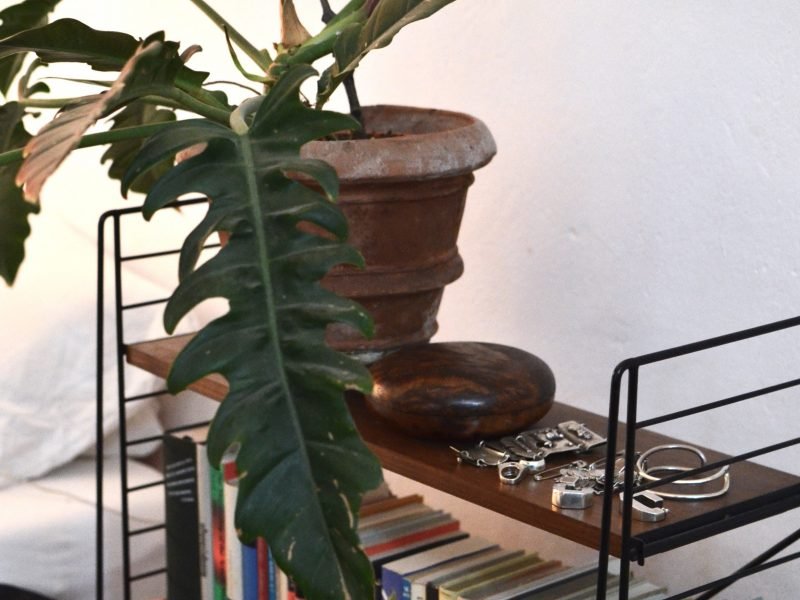
Propagating your Tree Philodendron
The main method of propagating a Tree Philodendron is through stem cuttings. You may choose to do this if your plant is getting too big and unruly, you want to increase the number of plants in your home or even to create a nice gift for friends and family.
To propagate your Tree Philodendron successfully, take a stem cutting with at least one node and grow it in water for a few weeks. Make sure that the water is room temperature so you don’t burn or shock the cuttings. Once roots have started to grow out of the node you can pot into fresh soil and continue to care for your plant as you would the mother plant.
Repotting your Tree Philodendron
On average, you should be repotting your Split-leaf Philodendron every 1 to 2 years. However, this will depend a little on the environment and growth rate. Make sure to keep an eye out for signs that your plant needs repotting, including roots growing out of the drainage holes or out of the top of the pot.
If your plant isn’t growing any new leaves throughout the main growth period, then it may also be rootbound and need repotting. Remove the plant from its pot to check the root system. If rootbound, they will be very tightly coiled and there won’t be much soil left in the pot.
Tree Philodendron Toxicity to Humans and Pets
Because they contain insoluble calcium oxalate crystals, Tree Philodendron plants are toxic to humans and pets if ingested or if you come into contact with the sap. Symptoms of toxicity from the Philodendron Selloum include mouth, tongue, throat and stomach irritation, vomiting and skin irritation. Seek medical attention immediately if your child or pet has come into contact with the toxic sap.
We highly recommend that you wear gloves when handling, propagating, repotting or pruning your plant and that you keep it out of reach of pets and small children.
Treating and Preventing Pests
If your Tree Philodendron is grown indoors throughout the year, then a pest infestation will be quite rare but it can happen. Your plant may suffer from spider mites, thrips, mealybugs, fungus gnats or whiteflies.
Look out for signs of pests that include brown and yellow spots, holes in the leaves, white webbing or powder across the leaves and stems and white mildew. Use a magnifying glass to also look for actual pests on the leaves as these can be difficult to see with the naked eye.
If you do spot pests or signs of them, isolate your plant from all other houseplants to stop the infestation from spreading and treat it with a rigorous routine of neem oil and an insecticide.
With the right treatment, you can be successful at stopping a pest infestation but the chances of doing that are much higher if you catch the issue early. This is why we strongly recommend that you conduct regular and in-depth check-ups of your plant to spot any warning signs as early as possible.
Top tip: always check the undersides of the leaves as this is where pests like to hang out and they can often go undetected there for a long time.
Tree Philodendron Common Problems
Why does my Tree Philodendron have yellow leaves?
Yellow leaves on a Philodendron Selloum are often a sign of overwatering. They will look quite sickly and be a little softer than usual. Check the moisture in the soil to confirm that this is what is causing the yellow leaves on your plant and adjust your watering schedule accordingly.
Your plant might also be developing yellow leaves as a result of temperature extremes, direct sunlight, pests or simply natural ageing.
Why does my Philodendron Selloum have brown leaves?
There are two main causes of brown leaves on a Tree Philodendron; overwatering and underwatering. It’s really important that you diagnose the issue properly so you know how to adjust your watering schedule.
An underwatered Tree Philodendron will have light brown leaves, often from the tips and edges inwards that look and feel quite crispy. The potting mix will also be really dry and compacted.
An overwatered Split-leaf Philodendron will have dark brown leaves that are softer to touch. The brown patches will often be all over the leaf.
Why is my Tree Philodendron losing leaves?
If your Tree Philodendron is losing a few leaves each year, then this might just be natural ageing. A good way to tell is if these leaves are the oldest, lowest and smallest leaves as this just means your plant is focusing that energy on new bigger growth.
However, if your plant is losing leaves regularly, then it might be a symptom of temperature stress, lack of sunlight, pests or shock.
Why is my Tree Philodendron drooping?
A drooping Philodendron Selloum is most commonly caused by watering issues; both underwatering and overwatering. It can be a little confusing that both of these extremes can cause your plant to droop but both damage the root system significantly. This deprives your plant of the things it needs to thrive and be stable which is why it will droop down.
Check the potting mix to figure out how you need to be adjusting your watering habits moving forward to prevent your plant from drooping in future.
Why does my Tree Philodendron have curling leaves?
If you’ve noticed that the leaves on your Philodendron Selloum are curling, then this is likely due to constant exposure to cold air. These plants really don’t cope well with drafts so we recommend investing in a digital thermometer to track any fluctuations.
Cold air caused by cracks in windows and doors as well as close proximity to AC vents can lead to the leaves on your Tree Philodendron curling.












